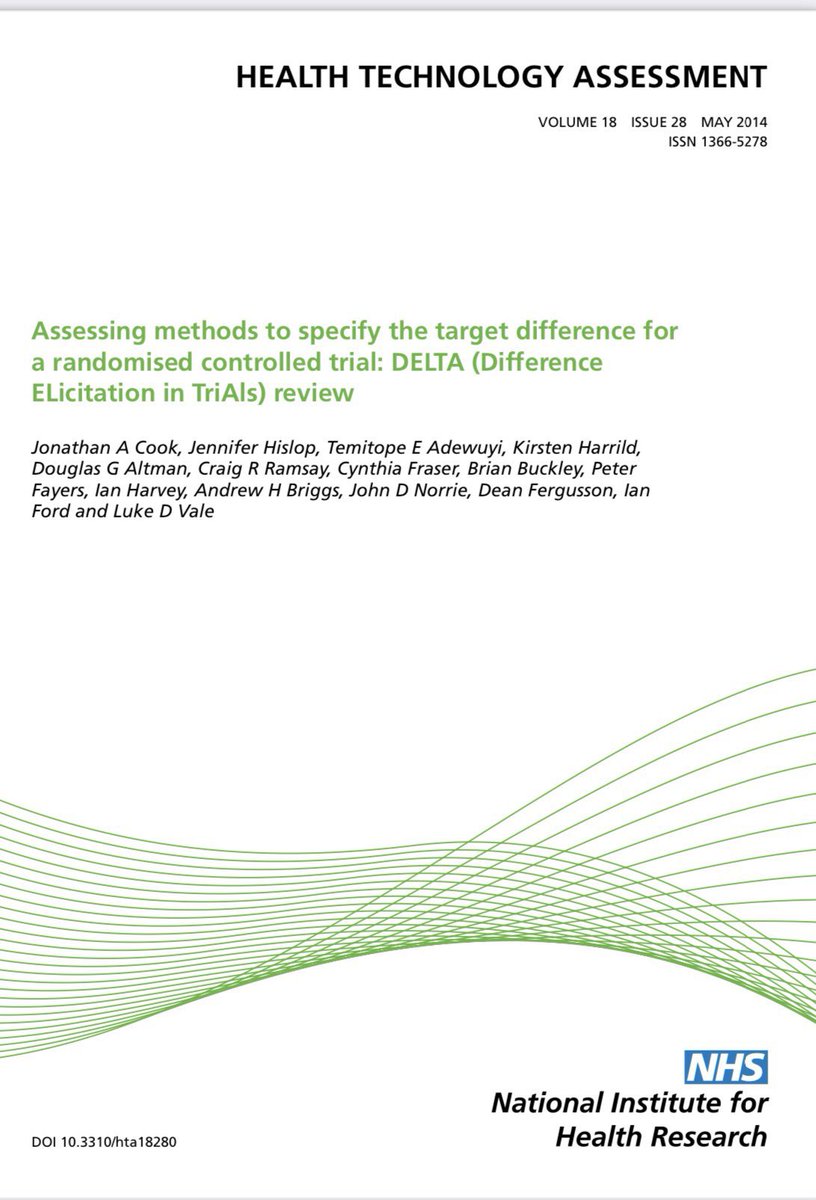This week some of my discussions have centred on #ClusterTrials. Cluster trials involve the randomisation of intact units (wards, hospitals, GP practices etc) rather than individuals. They have a number of key elements that must be accounted for 1/11
#MethodologyMonday
#MethodologyMonday
There are very good reasons for cluster/group randomisation eg when evaluating interventions like clinical guidelines or educational interventions which apply at practice/hospital level; or when there is potential of contamination of the intervention across trial groups 2/11
However, cluster randomisation has some major impacts for design & analysis primarily because observations within a cluster are not independent (outcomes are likely to be more similar within a cluster) 3/11
This intra-cluster correlation - measured by the intracluster correlation coefficient (ICC) - needs to be accounted for or trial results will appear more “significant” than they actually are. 4/11
Sample size needs to be inflated to account for this clustering. In its simplest form a std sample size needs to be inflated by a multiplier - the design effect - which accounts for the cluster size and the ICC 5/11
academic.oup.com/ije/article/44…
academic.oup.com/ije/article/44…

Estimates of the ICC are needed. There are published estimates to help for different fields. Some are given below 6/11
Implementation research: journals.sagepub.com/doi/abs/10.119…
Primary care: jclinepi.com/article/S0895-…
Schools: jclinepi.com/article/S0895-…
Implementation research: journals.sagepub.com/doi/abs/10.119…
Primary care: jclinepi.com/article/S0895-…
Schools: jclinepi.com/article/S0895-…
Consent can also be different in cluster trials as many interventions are not targeting patients directly. Some cluster trials therefore seek a waiver of consent. The Ottawa statement on cluster trials is a great read on consent & ethical issues 7/11
journals.plos.org/plosmedicine/a…
journals.plos.org/plosmedicine/a…

Selection bias can be an issue in cluster trials as usually treatment allocation is known ahead of patient recruitment. Awareness of allocation can lead to biased recruitment in the different arms of the trial. It is important to mitigate against this 8/11
bmcmedresmethodol.biomedcentral.com/articles/10.11…
bmcmedresmethodol.biomedcentral.com/articles/10.11…

Process evaluations also need to think about the extra dimension added by the clustering. Aileen Grant et al discuss some of the issues which arise in the following paper 9/11
trialsjournal.biomedcentral.com/articles/10.11…
trialsjournal.biomedcentral.com/articles/10.11…

Analysis also needs cluster-tailored methods to ensure the results are adjusted to account for the ICC and don’t over amplify the significance of the results. 10/11
trialsjournal.biomedcentral.com/articles/10.11…
trialsjournal.biomedcentral.com/articles/10.11…

There are now neat variants on the cluster design including the cluster-crossover design (CRXO) which is a particularly efficient design in this space 11/11
bmj.com/content/371/bm…
bmj.com/content/371/bm…

• • •
Missing some Tweet in this thread? You can try to
force a refresh






